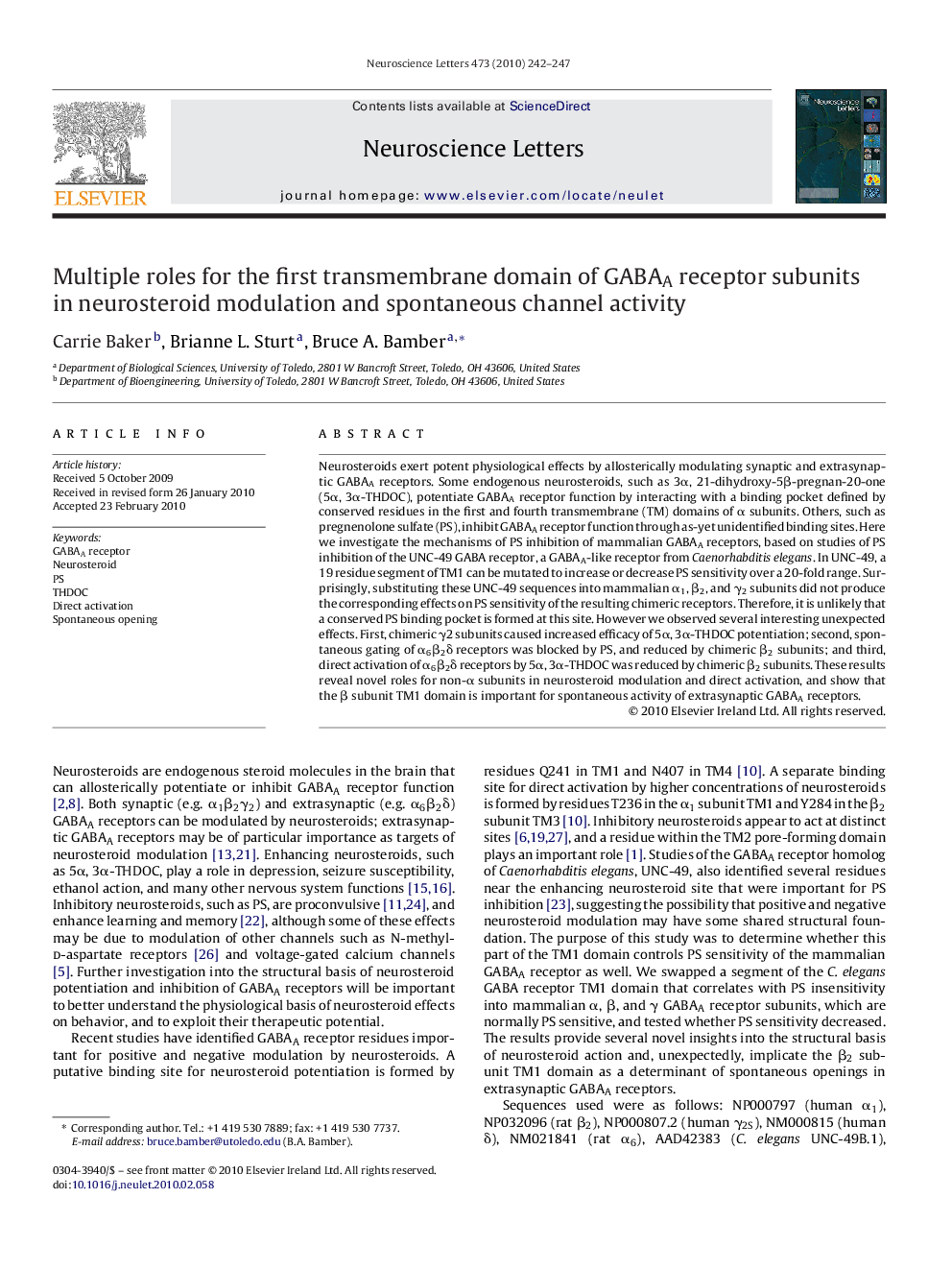| Article ID | Journal | Published Year | Pages | File Type |
|---|---|---|---|---|
| 4346156 | Neuroscience Letters | 2010 | 6 Pages |
Neurosteroids exert potent physiological effects by allosterically modulating synaptic and extrasynaptic GABAA receptors. Some endogenous neurosteroids, such as 3α, 21-dihydroxy-5β-pregnan-20-one (5α, 3α-THDOC), potentiate GABAA receptor function by interacting with a binding pocket defined by conserved residues in the first and fourth transmembrane (TM) domains of α subunits. Others, such as pregnenolone sulfate (PS), inhibit GABAA receptor function through as-yet unidentified binding sites. Here we investigate the mechanisms of PS inhibition of mammalian GABAA receptors, based on studies of PS inhibition of the UNC-49 GABA receptor, a GABAA-like receptor from Caenorhabditis elegans. In UNC-49, a 19 residue segment of TM1 can be mutated to increase or decrease PS sensitivity over a 20-fold range. Surprisingly, substituting these UNC-49 sequences into mammalian α1, β2, and γ2 subunits did not produce the corresponding effects on PS sensitivity of the resulting chimeric receptors. Therefore, it is unlikely that a conserved PS binding pocket is formed at this site. However we observed several interesting unexpected effects. First, chimeric γ2 subunits caused increased efficacy of 5α, 3α-THDOC potentiation; second, spontaneous gating of α6β2δ receptors was blocked by PS, and reduced by chimeric β2 subunits; and third, direct activation of α6β2δ receptors by 5α, 3α-THDOC was reduced by chimeric β2 subunits. These results reveal novel roles for non-α subunits in neurosteroid modulation and direct activation, and show that the β subunit TM1 domain is important for spontaneous activity of extrasynaptic GABAA receptors.
